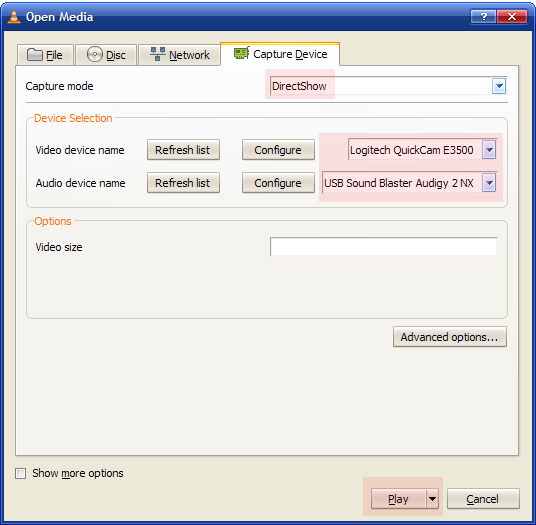

- MAKEMKV STREAM TO VLC MP4
- MAKEMKV STREAM TO VLC WINDOWS
but that format doesn't necessarily stream well. As mentioned above, the file will be in a format. The reason you need to give the -sout '#http' parameter, then yes (sorry, for my original mistake). Hopefully I've largely covered this above. What is done by muxing/multiplexing the video data?
MAKEMKV STREAM TO VLC WINDOWS
This is a mixture between Windows using file extensions, and VLC using a more magic-esque technique to identify data.
MAKEMKV STREAM TO VLC MP4
mp4 identifies which application to use to handle the file - VLC (for example) subsequently ignores the extension, and determines correctly that actually. Because you're using a unix system, and the file type is identified using " Magic" - this indicates which application to use to handle it, not the file's extension.The reason that this still works is either: mp4 file, you might not actually referring to the container format - generally, so long as you can get the correct application to handle the data, that application will understand what it's looking at and process it accordingly. For example Matroska is an incredibly open format that can support virtually anything. Often however, it's also possible to store any arbitary binary data in another stream within the container. Indexing - to facilitate seeking, a suprisingly complex topic!.Metadata - e.g: Chapter, Scene, Artist / Track name, etc.
 One or more video streams - e.g: points of view. Multiple audio streams - e.g: languages, audio described, commentary, channels (stereo vs surround), etc. There are a load of different containers which have different features and benefits. One could argue that the " multiplexer" is the logical block (code) that deals with splitting or merging the streams, while the " container format" is the way the data is prepared and formatted for storage or transmission.Īt a more fundamental electronics level, a multiplexer will simply put one signal on a transmission line at a time. In this context, the term is somewhat synonymous with a " Mux" or " Multiplexer". In order to address these issues, you can multiplex the two (or more) streams into one stream. unless you deal with that carefuly and explicitly (e.g: using time codes) The audio / video sync can easily fail, with one getting ahead of the other. Lose one or the other, and the media is unusable There are two files, which must be handled as one " entity". It'll produce the same experience for the end user, but there will be a number of issues: One option is indeed to have two separate files on disk, which you play independantly - this is often how Digital Cinema content is distributed. They do not usually come together, but rather exist as separate entities - in your case H.264 and AAC. As you have identified, a " video" is typically actually both audio and video.
One or more video streams - e.g: points of view. Multiple audio streams - e.g: languages, audio described, commentary, channels (stereo vs surround), etc. There are a load of different containers which have different features and benefits. One could argue that the " multiplexer" is the logical block (code) that deals with splitting or merging the streams, while the " container format" is the way the data is prepared and formatted for storage or transmission.Īt a more fundamental electronics level, a multiplexer will simply put one signal on a transmission line at a time. In this context, the term is somewhat synonymous with a " Mux" or " Multiplexer". In order to address these issues, you can multiplex the two (or more) streams into one stream. unless you deal with that carefuly and explicitly (e.g: using time codes) The audio / video sync can easily fail, with one getting ahead of the other. Lose one or the other, and the media is unusable There are two files, which must be handled as one " entity". It'll produce the same experience for the end user, but there will be a number of issues: One option is indeed to have two separate files on disk, which you play independantly - this is often how Digital Cinema content is distributed. They do not usually come together, but rather exist as separate entities - in your case H.264 and AAC. As you have identified, a " video" is typically actually both audio and video.






 0 kommentar(er)
0 kommentar(er)
